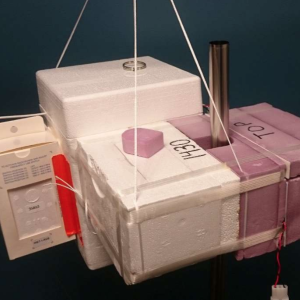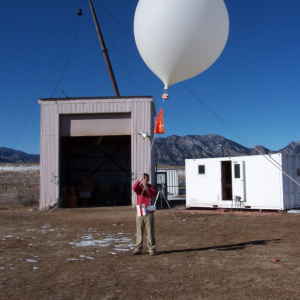The NOAA Balloon-borne Frost Point Hygrometer is based on the chilled mirror principle. The FPH measures the temperature of a small mirror controlled to maintain a constant, thin layer of frost. Under stable conditions the mirror temperature equals the frost point temperature of the air passing over the mirror. The frost coverage on the mirror is detected by a photodiode that senses the light of a light-emitting diode (LED) reflected off the mirror surface. Both optical components are rigorously temperature controlled, minimizing drift in the LED's intensity and the photodiode's sensitivity. The reflectance signal is used to control the temperature of the mirror using P-I-D logic. The mirror temperature is measured by a well-calibrated bead thermistor. The mirror temperature is telemetered to the ground station (along with a large array of other data) by a radiosonde that also provides in situ measurements of ambient temperature, pressure, relative humidity (only in the lower and middle troposphere), and GPS coordinates.
Balloon Borne Frost Point Hygrometer
Measurements
Aircraft
Recent Missions
Point(s) of Contact
(POC; PI),
(Prev PI)
Range of Measurement
In situ
Measurement Sampling Rate
0.10 Hz
Weight
0.50 kg
TRL
9
Publications
Oltmans, S.J. (1985), Measurements of water vapor in the stratosphere with a frost point hygrometer, Measurement and Control in Science and Industry, Proceedings of the 1985 International Symposium on Moisture and Humidity, Washington, D. C., Instrument Society of America, 251-285.
Hall, E.G., et al. (2016), Advancements, measurement uncertainties, and recent comparisons of the NOAA frost point hygrometer, Atmos. Meas. Tech., 9, 4295-4310, doi:10.5194/amt-9-4295-2016.



